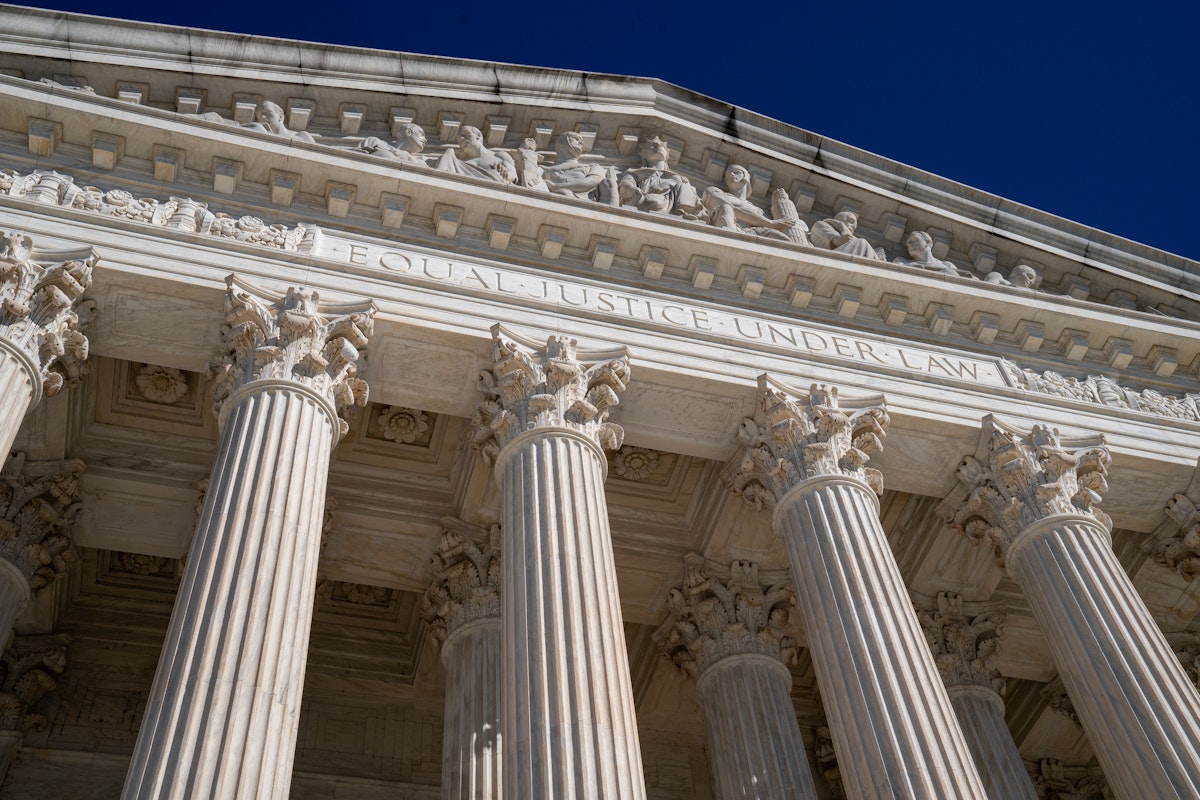Supreme Court Nukes Chevron, in Massive Blow to Federal Agencies
The Supreme Court on Friday delivered a serious blow to administrative law and overruled the Chevron doctrine, a long-standing safeguard for clarifying ambiguous laws. In a 6–3 decision, with all liberal justices dissenting, the court overturned decades of precedent, stripping power from federal agencies and empowering the judiciary.The Chevron doctrine, or Chevron deference, is a legal framework where courts traditionally defer the authority of interpreting an ambiguous federal statute to the federal agency in charge of overseeing that statute on the basis that the agency, not the courts, know best. Only when an agency’s recommended interpretation of a vague statute passed by Congress fails to be a “reasonable interpretation,” under Chevron, do courts get to alter the law.Chevron’s survival was brought to the Supreme Court in two cases heard jointly. Both cases deal with a regulation from the National Marine Fisheries Service that requires professional observers on fishing boats, with a vague statute that seems to state the owner of the fishing boat has to pay for those required observers. The cases seek to clarify that statute and to overturn Chevron, after lower courts upheld the rule and determined it was a reasonable interpretation.The Supreme Court during oral arguments seemed poised to throw out the Chevron doctrine or possibly limit its scope, which led tax experts to believe Chevron would get axed, according to the Journal of Accountancy. Speaking to the Journal, tax and technology attorney Andrew Leahey predicted the end of Chevron would prompt a sea of regulatory tax frameworks to “be put on hold and litigated,” with the added complications of expecting Congress to pass “incredibly specific” statutes, adding, “This will be difficult in the current political environment, as getting anything done in Congress is a chore.”Justice Brett Kavanaugh argued that the interpretation of agency regulations varies “every four to eight years when a new administration comes in,” causing “shocks to the system.” In the decision delivered on Friday, Chief Justice John Roberts delivered a lengthy history of administrative law before arguing that federal agencies with specific expertise about the best way to implement unclear laws “have no special competence in resolving statutory ambiguities. Courts do.”Opposing the decision, Justice Elena Kagan issued a strong warning about the Supreme Court’s judicial overreach in overturning the Chevron doctrine.“In one fell swoop, the majority today gives itself exclusive power over every open issue—no matter how expertise-driven or policy-laden—involving the meaning of regulatory law,” wrote Kagan. “As if it did not have enough on its plate, the majority turns itself into the country’s administrative czar. It defends that move as one (suddenly) required by the (nearly 80-year-old) Administrative Procedure Act. But the Act makes no such demand. Today’s decision is not one Congress directed. It is entirely the majority’s choice. And the majority cannot destroy one doctrine of judicial humility without making a laughing-stock of a second.”

The Supreme Court on Friday delivered a serious blow to administrative law and overruled the Chevron doctrine, a long-standing safeguard for clarifying ambiguous laws. In a 6–3 decision, with all liberal justices dissenting, the court overturned decades of precedent, stripping power from federal agencies and empowering the judiciary.
The Chevron doctrine, or Chevron deference, is a legal framework where courts traditionally defer the authority of interpreting an ambiguous federal statute to the federal agency in charge of overseeing that statute on the basis that the agency, not the courts, know best. Only when an agency’s recommended interpretation of a vague statute passed by Congress fails to be a “reasonable interpretation,” under Chevron, do courts get to alter the law.
Chevron’s survival was brought to the Supreme Court in two cases heard jointly. Both cases deal with a regulation from the National Marine Fisheries Service that requires professional observers on fishing boats, with a vague statute that seems to state the owner of the fishing boat has to pay for those required observers. The cases seek to clarify that statute and to overturn Chevron, after lower courts upheld the rule and determined it was a reasonable interpretation.
The Supreme Court during oral arguments seemed poised to throw out the Chevron doctrine or possibly limit its scope, which led tax experts to believe Chevron would get axed, according to the Journal of Accountancy. Speaking to the Journal, tax and technology attorney Andrew Leahey predicted the end of Chevron would prompt a sea of regulatory tax frameworks to “be put on hold and litigated,” with the added complications of expecting Congress to pass “incredibly specific” statutes, adding, “This will be difficult in the current political environment, as getting anything done in Congress is a chore.”
Justice Brett Kavanaugh argued that the interpretation of agency regulations varies “every four to eight years when a new administration comes in,” causing “shocks to the system.” In the decision delivered on Friday, Chief Justice John Roberts delivered a lengthy history of administrative law before arguing that federal agencies with specific expertise about the best way to implement unclear laws “have no special competence in resolving statutory ambiguities. Courts do.”
Opposing the decision, Justice Elena Kagan issued a strong warning about the Supreme Court’s judicial overreach in overturning the Chevron doctrine.
“In one fell swoop, the majority today gives itself exclusive power over every open issue—no matter how expertise-driven or policy-laden—involving the meaning of regulatory law,” wrote Kagan. “As if it did not have enough on its plate, the majority turns itself into the country’s administrative czar. It defends that move as one (suddenly) required by the (nearly 80-year-old) Administrative Procedure Act. But the Act makes no such demand. Today’s decision is not one Congress directed. It is entirely the majority’s choice. And the majority cannot destroy one doctrine of judicial humility without making a laughing-stock of a second.”



